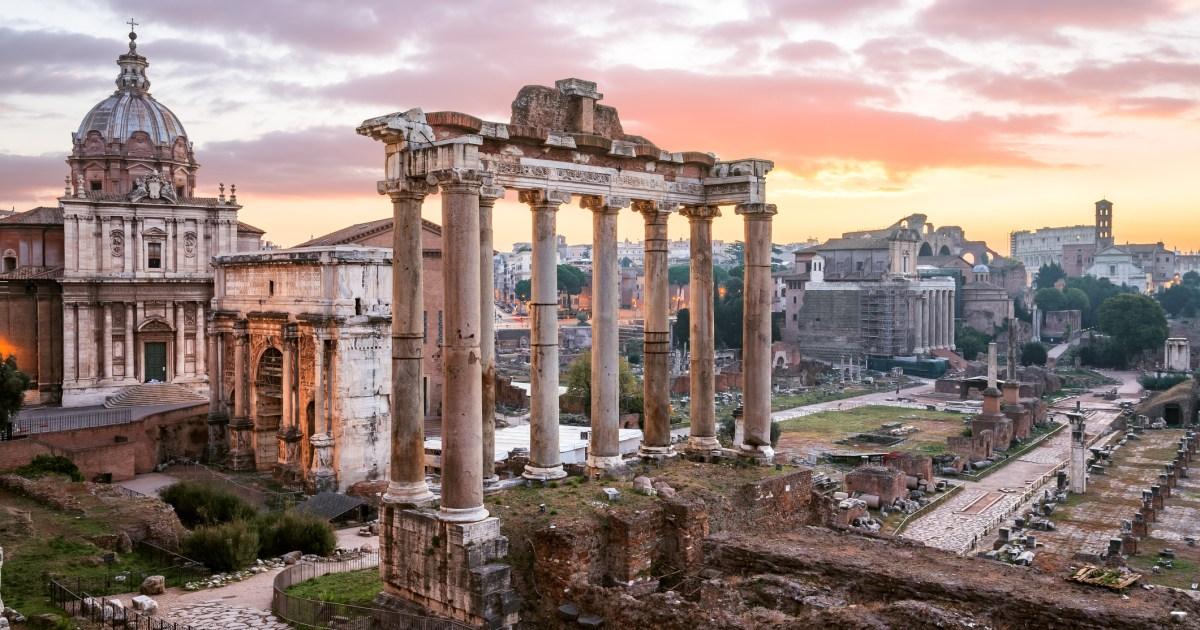Believe it or not, Rome was not always the centre of the Roman Empire.For a time, that honour went to Carlisle.Yes, the rainy Cumbrian city a stone’s throw from the Scottish border in north west England was the seat of power for one of the world’s greatest civilisations, according to archaeologists digging up the local cricket ground.
Six years of excavation have revealed it was once home to an Imperial Bath House, built for the Roman emperor Septimius Severus while he was staying in the city around the turn of the third century AD.And wherever the emperor lived was the centre of the empire.The bath house is thought to be the largest building discovered along Hadrian’s Wall, which once stretched unbroken from Bowness on Solway in Cumbria to Wallsend – then Segedunum – east of Newcastle.
Although almost 2,000 years old, the remains of 34 separate tiles bearing the letters IMP, signature of the Roman Imperial court, were found.These suggest it was either built for or on the command of Severus.The team of archaeologists, including historian and presenter Professor Alice Roberts, believe the emperor was in Carlisle shortly before his death in 211 CE, based on an ancient text called Historia Augusta.
However, there were two other key clues pointing towards the finding were enormous sculptures and a regal dye.In summer 2023, two ‘monumental’ sculpted heads were discovered at the site, which would have adorned the rooftops.Both are larger than life-sized, treatment reserved only for the gods or emperors. The sculptures would have adorned the rooftop of the bath house, creating an impressive entrance for anyone visiting.
Interestingly, many of the most remarkable artefacts were found in an unexpected place – down the drains – including a striking purple mineral which could have been used to dye clothes.More Trending Urgent warning for Android users over bug that can empty your bank account Invasion warning as one of Earth's most feared creatures 'heads to UK' Teen hospitalised with a severe case of 'love brain' Urgent warning for anyone using scarily accurate 'AI death calculator' Read More StoriesThis serves as further evidence Carlisle was home to the emperor, because only Roman rulers could wear purple.The drains offered a whole trove of treasure, including an amethyst showing Venus and a red-brown jasper.
Dozens of precious gemstones were found, likely lost by bathers after the steamy conditions weakened the glue holding them in their settings.‘I love archaeology like this – turning up completely unexpected discoveries,’ said Professor Roberts, speaking to Mail Online.‘And here we have this brilliant association of archaeology with a specific moment in history – when Septimius Severus and his entourage were in town, in Carlisle, at the northwest frontier of the Empire. ‘But of course those attempts to subjugate Caledonia would ultimately fail.’ Archaeologist Frank Giecco from Wardell Armstrong Archaeology added: ‘The north of England would have been the centre of the Roman Empire.’ Mr Giecco and the team began excavating the cricket ground in 2017, before it was moved to higher ground following flooding in 2005 and 2015.
Carlisle’s surprising new status was revealed in full during an episode of Digging For Britain, presented by Professor Roberts, earlier this year.MORE : ‘Charming’ seaside town crowned best beach destination in England and Wales
MORE : Here’s when to expect the 2024 local election results – including London Mayor
MORE : Cavemen had a savage way of dealing with zombies
Sign Up for News UpdatesGet your need-to-know
latest news, feel-good stories, analysis and morePrivacy PolicyThis site is protected by reCAPTCHA and the Google Privacy Policy and Terms of Service apply.









